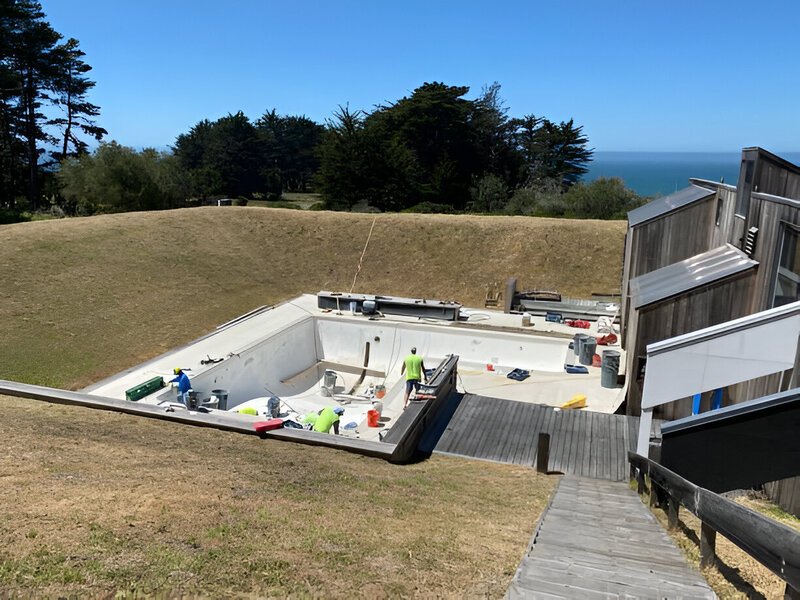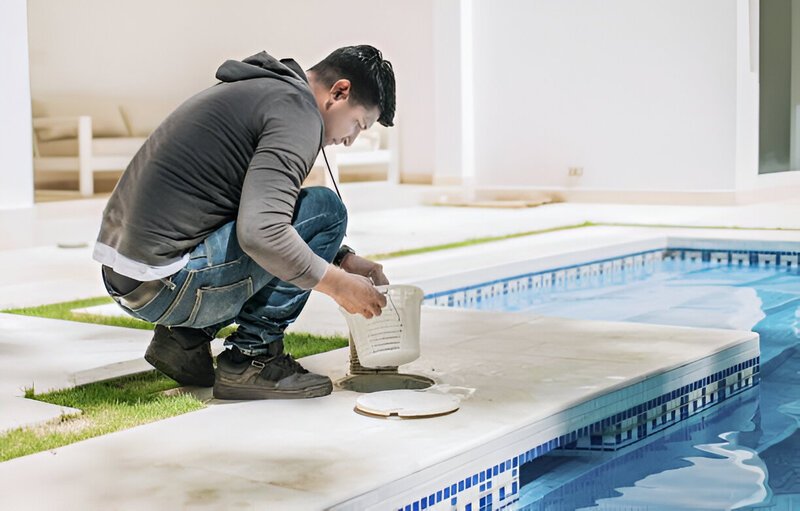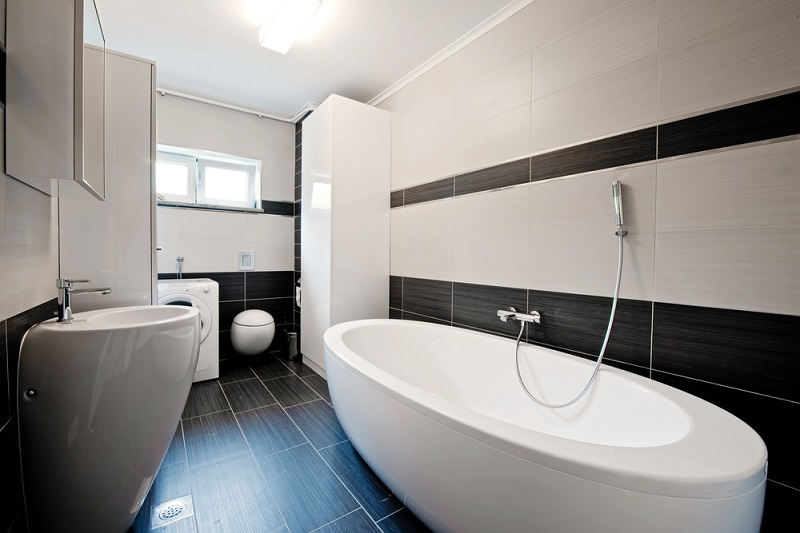A delicious drink in hand, a sunlit afternoon by your own pool, and the sound of the water gently splashing while you unwind in your own haven. Sounds perfect, right? However, how can one make this dream come true? Working well with a competent pool builder is essential to creating your dream backyard escape. This guide will help you understand how to build a strong partnership with your pool builder, navigate the project smoothly, and ensure a successful outcome. Let’s dive in!
Why Choose a Professional Pool Builder?
When it comes to pool installation, the complexity of the project makes it clear that this is not a typical DIY endeavour. Although you may have tackled various home improvement projects on your own, constructing a pool involves numerous technical and logistical challenges that are best managed by professionals.
- Expertise and Experience: Professional pool builders bring a wealth of knowledge and experience to the table. They understand the intricacies of pool design and construction, including factors like soil conditions, water tables, and structural requirements. Their expertise ensures that your pool is built to last and meets all safety and regulatory standards.
- Time and Stress Management: Building a pool is a significant time investment and can be stressful if not managed properly. Professional builders streamline the process, allowing you to focus on enjoying the project rather than dealing with potential issues. They handle the complexities of scheduling, permits, and inspections, minimizing the risk of costly delays and unexpected problems.
- Cost-Effectiveness: While hiring a professional might seem like a bigger upfront investment, it can save you money in the long run. Experienced builders are adept at preventing mistakes and ensuring that your project stays within budget. They also have access to high-quality materials and resources that can enhance the value and durability of your pool.
What to Consider Before Contacting a Pool Builder

Before reaching out to a pool builder, it’s essential to have a clear vision and a well-defined plan. Here are some key considerations:
- Define Your Vision: Think about the style and features you want for your pool. Do you envision a sleek modern design or a more natural, lagoon-like appearance? Consider elements such as shape, size, and additional features like waterfalls, lighting, or spas.
- Assess Your Space: Evaluate the available space in your backyard. Measure the area where you plan to install the pool and consider any potential obstacles, such as trees, slopes, or existing structures. Understanding your space will help you determine the best pool design and layout.
- Establish a Budget: Determine how much you’re willing to spend on the project. Be realistic about your budget and factor in costs for construction, landscaping, maintenance, and any additional features. Communicate your budget clearly to the pool builder to avoid surprises and ensure that you receive a design that aligns with your financial expectations.
- Research Builders: Investigate potential pool builders by reviewing their portfolios and reading customer reviews. Look for examples of their previous work to gauge their style and quality. A builder’s reputation and track record can provide valuable insights into their reliability and professionalism.
How to Maximize Meetings with Your Pool Builder
Effective communication is crucial for a successful collaboration with your pool builder. The following tips can help you maximize your meetings:
- Communicate Clearly: Share your ideas and expectations with the pool builder in detail. Explain your vision, preferred materials, and any specific requirements you have. Ensure that the builder understands your goals and can incorporate them into the design.
- Provide Visual Aids: Use sketches, mood boards, or photos to visually convey your ideas. Visual aids can help the builder understand your style preferences and provide a reference for the design. The more specific you are, the easier it will be for the builder to translate your vision into a concrete plan.
- Request Drafts and Revisions: Ask for preliminary designs or visual representations of the proposed pool. This allows you to review and provide feedback before construction begins. Be proactive in identifying and addressing any potential issues or changes early in the process.
- Document Everything: Keep a detailed record of all meetings and discussions. Documenting decisions, changes, and agreements ensures that nothing is overlooked and helps prevent misunderstandings. Having a written record can also be useful for tracking progress and resolving any disputes that may arise.
Pros and Cons of Different Pool Materials
The choice of pool material can significantly impact the pool’s durability, maintenance, and overall appearance. Here’s a quick overview of the most common pool materials:
- Concrete: Concrete pools are highly customizable and can be shaped to fit any design. They are durable and long-lasting but require regular maintenance and resurfacing. Concrete pools also tend to be more expensive due to the labour-intensive installation process.
- Vinyl: Vinyl pools are pre-fabricated and often more affordable than concrete options. They offer a smooth surface and require less maintenance. However, vinyl liners can be prone to tears and may need to be replaced periodically.
- Fiberglass: Fiberglass pools are pre-molded and installed as a single piece. They are low-maintenance and have a smooth, non-porous surface. Fiberglass pools are relatively quick to install but are limited in design options compared to concrete.
When Is It Best to Construct a Pool?
Contrary to popular belief, pool installation is not restricted to the warmer months. Here are some benefits of building your pool in cooler seasons:
- Reduced Demand: Pool builders often have more availability and lower prices during off-peak times, such as fall or winter. This can result in quicker project completion and potential cost savings.
- Optimal Curing Conditions: Cooler weather can be ideal for certain construction processes, such as concrete curing. This can improve the quality and longevity of your pool.
- Early Preparation: Starting your pool project in the cooler months allows you to have it ready for use by the time the warm weather arrives. This way, you can enjoy your new pool without the long wait.
Conclusion: Making a Splash with Your Pool Project
Creating your dream pool involves more than just selecting a design; it requires a strong partnership with a skilled pool builder. By defining your vision, researching builders, and maintaining clear communication, you set the stage for a successful project. Remember, building a pool is not just about the construction—it’s about crafting a personal sanctuary for relaxation and enjoyment. Embrace the process, and soon enough, you’ll be diving into your own slice of paradise.



